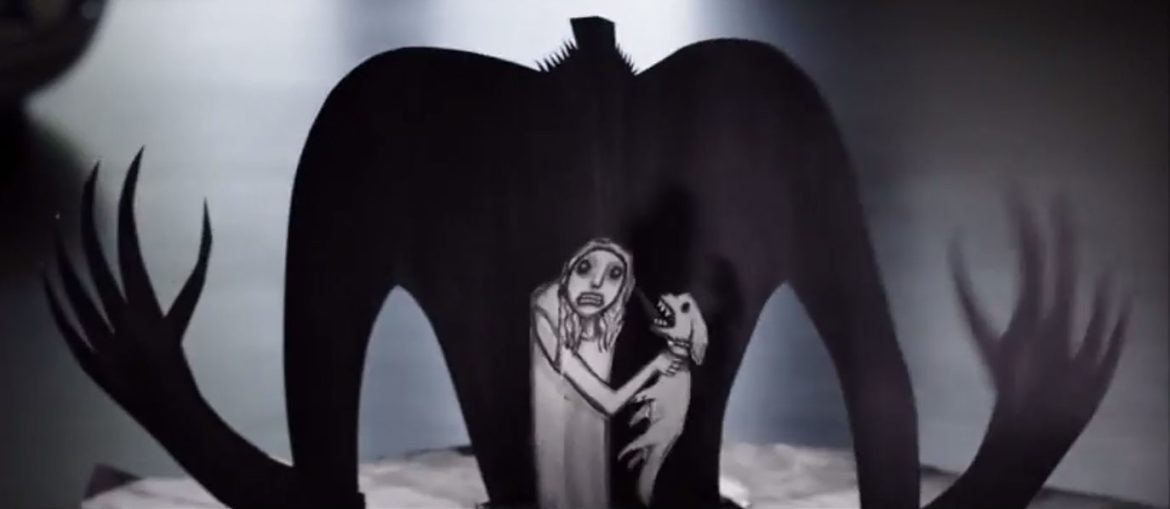Many horror movies are about external dangers coming to get you – monsters, demons, Dex Dogtective. But many are about the latent terror that was already there. Jennifer Kent’s brilliant, unsettling The Babadook is a recent example of the second sort.
Essie Davis plays Amelia, a widowed single mom raising her very odd, very exhausting son Samuel (Noah Wiseman). In a delicate roll-out, the film makes clear that Amelia’s husband was killed driving her to the hospital to give birth, so Samuel is a living reminder of this tragedy – his birthday and the anniversary of his father’s death are one and the same, which weighs heavily on Amelia.
Samuel, in general, weighs heavily on Amelia. He is in trouble at school, fixated on monsters and building weapons to fend them off, lashing out at his peers and scorned by them. In many ways, she is all he has, and the amount of time and emotional energy needed to deal with him makes the reverse true for her, as well. Family doesn’t even want to be around weird, potentially violent Samuel, and so Amelia is even further isolated.
Out of all this grating co-dependency and social isolation, an actual monster emerges. One night, Samuel pulls a bedtime story off the shelf called “The Babadook.” It’s a pop-up book and its titular character is a frightening vision, an ominous shadowy creature with long nails, sharp teeth, and a telltale knock (ba ba-ba DOOK DOOK DOOK). The book itself, written in rhyme, promises that once he’s released, you can’t get rid of him. And like in many a horror movie before it, opening the book was the first mistake. It’s not an ancient text written in Latin found in a basement of a haunted house, but the effect is the same.
Strange things begin to happen – bumps in the night, figures glimpsed in the corners of mirrors – and then escalate. Samuel is obsessed with the book, convinced it’s the monster he’s been preparing to protect his mother from. That’s a notable theme: all of his preparations and weapon-making, which fuel Amelia’s exhaustion and exasperation, are specifically to shield her from death by nefarious forces. It’s clear the randomness of his father’s death weighs as heavily on Samuel as it does on Amelia.
Amelia destroys the book but, of course, it returns to her doorstep. The pages at the back, previously blank, now show a series of horrors featuring her and her family (and the family dog). Freaked out, she contacts the police about a potential stalker, but their skepticism-bordering-on-concern makes clear they’ll be no help for this particular menace.
The film seems to build to a climactic showdown, but that’s not what director Jennifer Kent has in mind, exactly. Despite plenty of jump scares and battles with invisible forces, The Babadook isn’t really that kind of film. Its rather brilliant ending makes good on the book’s creepy promise: “If it’s in a word, or it’s in a look / You can’t get rid of the Babadook.”
Both leads are terrific, with Wiseman channeling Damien from The Omen at some points and simply a scared, wounded boy at others. Davis’ transformation throughout the film is astounding, exhaustion and stress reshaping her face even before the monster shows up. Kent pulls off a lot of neat tricks in The Babadook – particularly mining parental anxieties and the inner lives of children for scares, and presenting a monster who’s as scary offscreen as on. But the most effective trick she deploys is the most basic, and yet something all too rare in horror: keeping you on edge by creating and sustaining an atmosphere of dread borne out of a believable human relationship.
As a result, it’s never ludicrous that a monster from a pop-up book would haunt these people. They were haunted to begin with.

